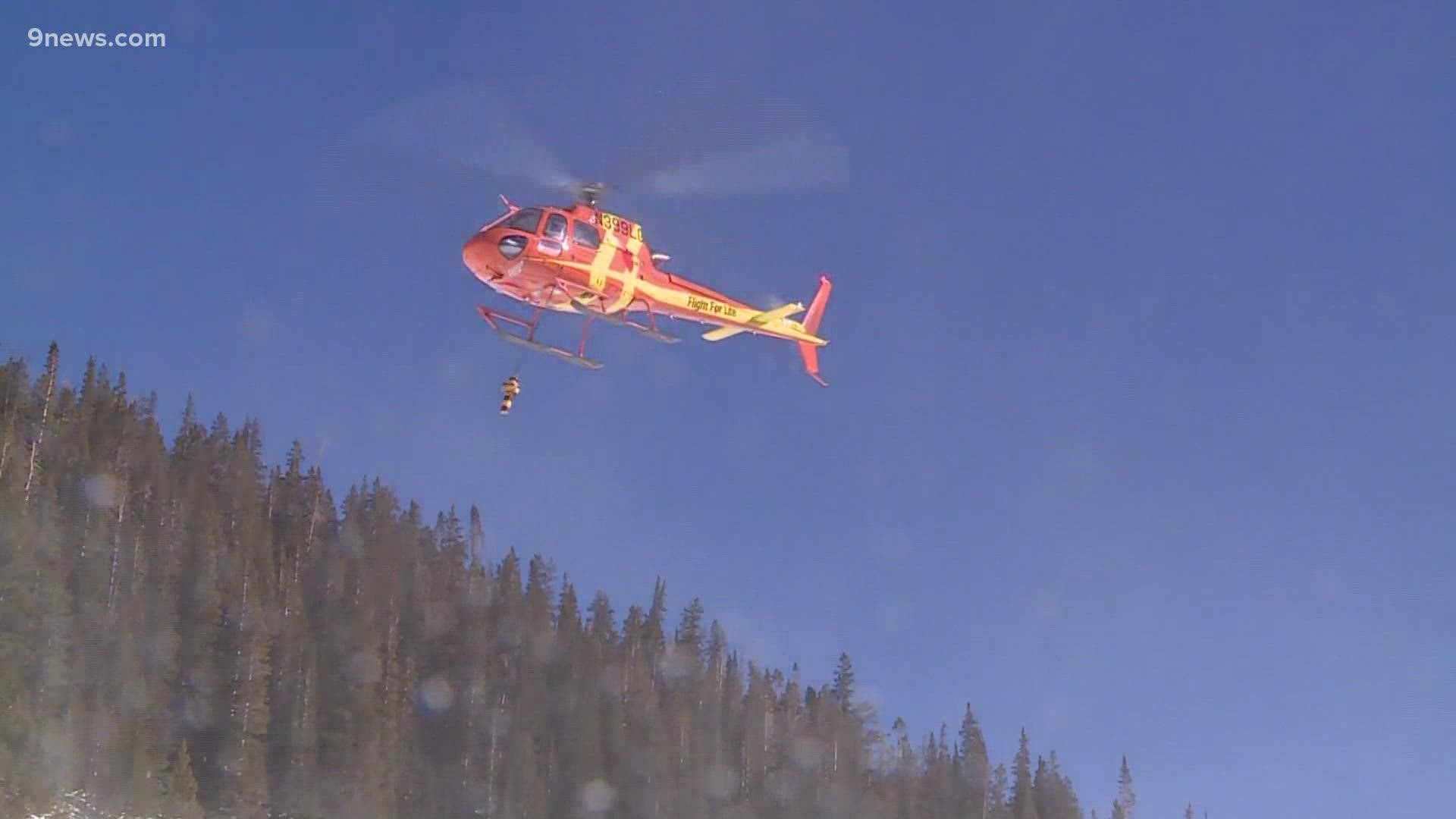CLEAR CREEK COUNTY, Colo. — Colorado has more avalanche deaths than any other state, and avalanches kill more people in Colorado than any other natural hazard, according to the Colorado Avalanche Information Center.
Two people were killed in an avalanche in Summit County near Hoosier Pass on Saturday, bringing the total to three deaths this season.
"We have so many deaths in Colorado because we have a large population living close to the mountains with easy access," Dale Atkins with the Alpine Rescue Team said. "And Colorado's snowpack is actually more dangerous than in other states."
Atkins said the cold air in the Colorado Rockies turns layers of snow crystals at the bottom of snowpack into a loose and sugary powder. Those loose bottom layers cannot support the weight of large snow slabs that form when large snowstorm cycles dump huge amounts of snow later in the winter.
The result, he said, is large and deep slabs of snow sliding down in highly destructive and dangerous avalanches.
On Monday, members of the Alpine Rescue Team met up with ski patrollers with Loveland Ski Area, the Clear Creek County Sheriff's Office, and medics from Flight for Life Colorado in an avalanche training exercise.
The simulation was staged just outside of Loveland Ski Area on Mount Bethel. Crews buried two victims in a snowfield to simulate an avalanche rescue scene. One victim was a dummy which was meant to simulate a dead victim, and the other was a live human completely buried.
“Time is the enemy to a fully buried avalanche victim," Atkins said. "After about 15 minutes, nine out of 10 victims survive. That’s pretty encouraging, but by 30 minutes, it drops to one in two."
In the simulation, Flight for Life Colorado helicopters were the first to move in. Hanging from the belly of one chopper was a new beacon that detected two avalanche transceivers coming from the victims.
“It can really pinpoint it down to about a 10-foot circle,” said Chad Miller, lead flight paramedic with Flight for Life Colorado. "We can get to remote locations and get on scene quicker. And we can cover a lot of ground in a short amount of time."
Miller said the external beacon on the helicopter can detect radio signals coming from all brands of avalanche transceivers that should be worn by anyone traveling in the backcountry.
He said the beacon can also detect emergency signals coming from devices like the Garmin inReach communicator or other similar devices made by other companies.
Flight for Life Colorado now has three helicopters equipped with the external beacon--one in Lakewood, one in Frisco, and another in Durango. They said this technology will be used for rescues during all seasons, not just winter.
The external beacon on the chopper can't locate signals coming from Recco Reflectors, but ground scanners can find those signals along with avalanche transceivers.
"The key is just making yourself searchable," Atkins said. "And that means having some kind of technology on you that transmits a signal."
At the avalanche training scene, after one helicopter located the area with the victims, another chopper flew in and dropped off a rescue team.
The team quickly located the first victim, which turned out to be the dummy. This time it was just a simulation, but Atkins said it's a far too familiar sight in avalanche rescues.
"It's rare for search and rescue teams to find anyone alive that is fully buried by an avalanche," he said. "In fact, I've been involved in avalanche rescues since the '70s, and I've yet to see it in person."
Although rare, there have been amazing stories of survival in other parts of the world. Atkins said that's why they go into every rescue with the belief that they will save a fully buried avalanche victim.
And it's also why they train.
Monday's exercise ended in success as the second victim was located in time to save his life.
It took the new external beacon and quick response by the rescue choppers; human action with ground scanners, probes and shovels; and the sharp nose of a huskie named Zuma to locate and save the victim.
“So in some ways, we're using the best of the modern technologies, and at the same time we still have to rely on technology that’s 2,000 years old to get the job done," Atkins said.
SUGGESTED VIDEOS: Science & Weather

